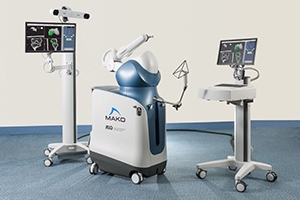Getting fitted with a completely new hip joint through a small incision may seem like science fiction, but this is possible today thanks to the significant advances in medical science and technology. When performed by a well-trained and experienced surgeon, the benefits of undergoing minimally invasive hip replacement are numerous:
Smaller Incisions: The traditional hip replacement procedure is performed through a single 10 or 12-inch incision. Minimally invasive hip replacement can be performed through a 4 to 6 inch-incision.
Less Cutting of Muscles and Tendons: There is less damaged to surrounding structures. In fact, with the anterior approach minimally invasive hip replacement, there is virtually no cutting of muscles or tendons.
Reduced Blood Loss: Due to smaller size of the surgical incision and less cutting of tissue, there is less blood loss and minimal need for blood transfusion during surgery.
Minimal Postoperative Pain: Due to reduced injury to adjacent healthy tissue, patients will have less pain and are less likely to need strong doses of pain medication during the postoperative recovery phase.
Shorter Hospital Stays: In some cases, minimally invasive hip replacement may be performed as an outpatient procedure and you could be allowed to return home on the same day as the surgery or within a day or two. After traditional hip replacement, you usually spend 4-5 days or longer in the hospital before discharge.
Less Postsurgical Scarring: As the surgical incision is a small one, the postsurgical scar formation at site of incision will be less. In some cases, the scar may be small enough to be concealed by a bikini or underwear.
Faster Healing: As the tendons and surrounding muscles are not cut during the minimally invasive hip replacement, they provide adequate support and stability to the implant. Thus, patients can recover faster and return to their daily routine.
Unfortunately, minimally invasive hip replacement is not for everyone. The procedure may not be suitable for those with very fleshy or muscular thighs, hips, and buttocks as well as those who have undergone a previous hip replacement or have severe hip deformity.
If you have been suffering from hip pain and have mobility problems, speak to your doctor or an orthopedic specialist to find out if you might be a candidate for minimally invasive hip replacement.




